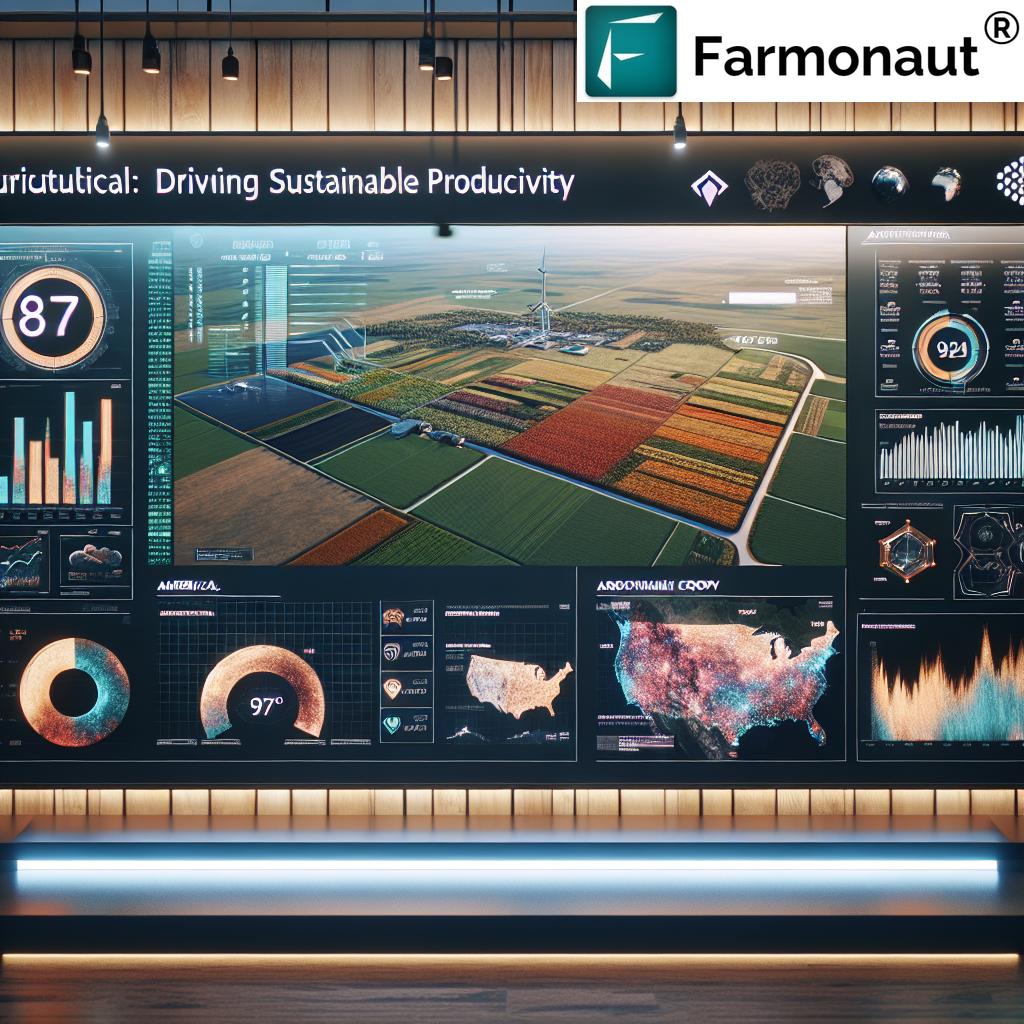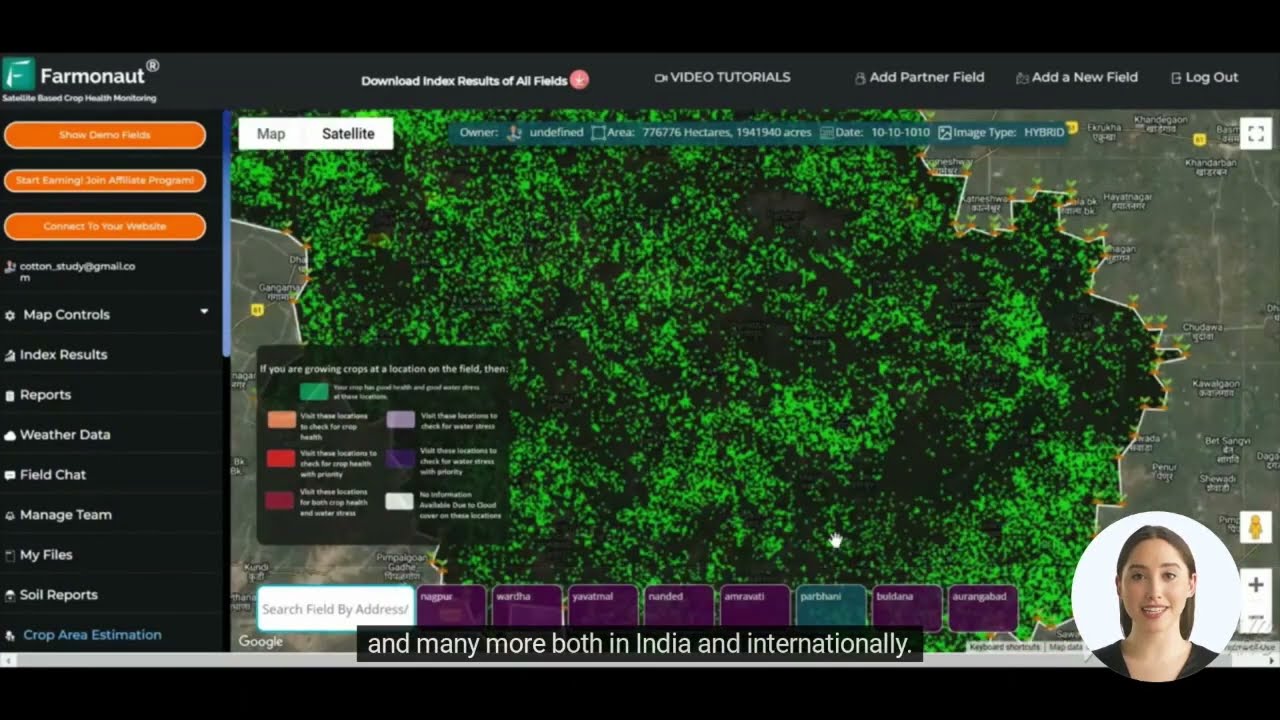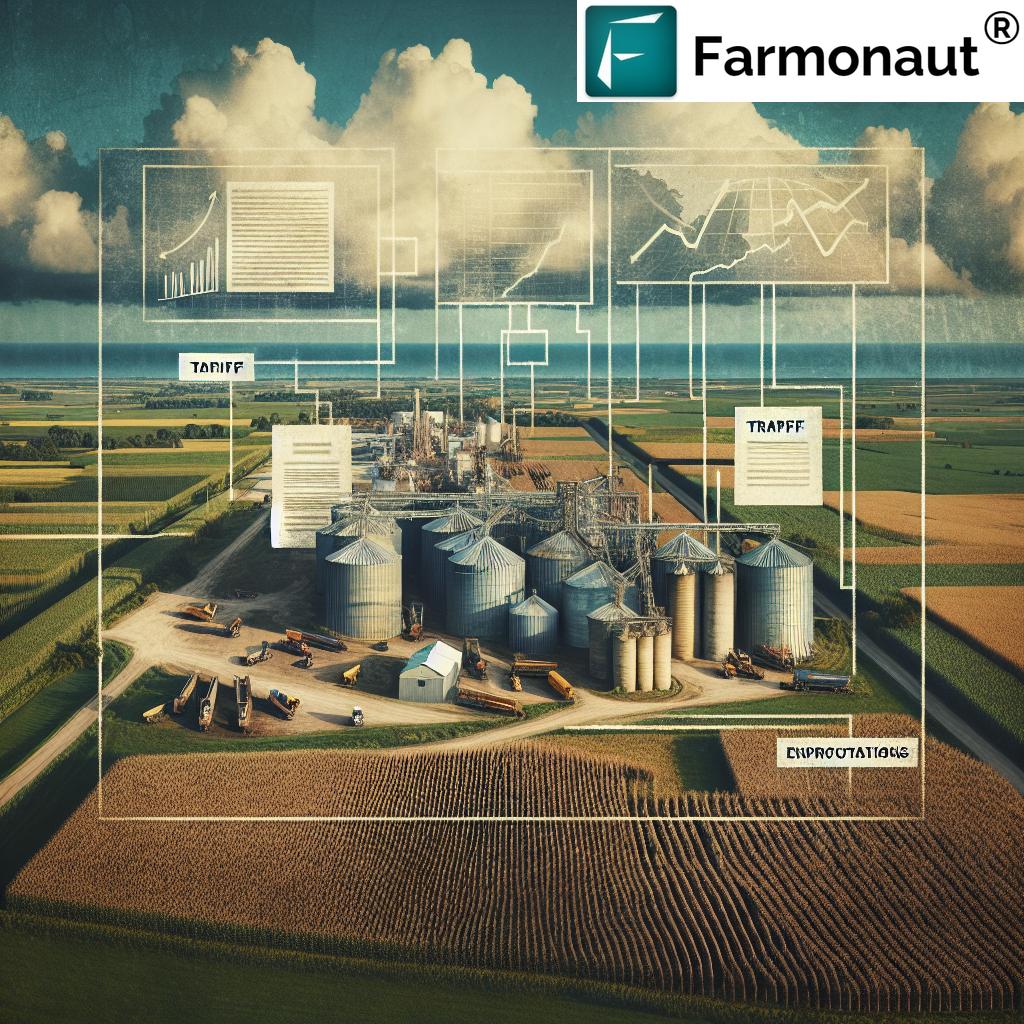Unlocking US Farm Insights: 2023 Agricultural Economic Trends and Data Analytics for Sustainable Productivity
“In 2023, US farm financial performance data revealed significant disparities among operators based on race and ethnicity.”
Welcome to our comprehensive exploration of the latest US farm statistics 2023 and agricultural economic trends shaping America’s rural economy. In this data-driven analysis, we’ll delve into farm financial performance, precision agriculture technology, and sustainable farming practices that are revolutionizing the agricultural landscape. Join us as we uncover valuable insights into crop yield forecasting, agricultural policy developments, and the advancements in farm management software that are driving innovation across the United States.

The State of US Agriculture in 2023: An Overview
As we navigate through 2023, the agricultural sector in the United States continues to evolve, adapt, and face new challenges. Our analysis of the latest US farm statistics reveals a complex landscape marked by technological advancements, economic pressures, and a growing focus on sustainability. Here’s what you need to know about the current state of American agriculture:
- Farm Financial Performance: Despite ongoing challenges, many US farms have shown resilience in their financial performance.
- Technological Adoption: Precision agriculture technology is becoming increasingly prevalent across farms of all sizes.
- Sustainability Focus: Sustainable farming practices are gaining traction as both a necessity and a market differentiator.
- Data-Driven Decision Making: Agricultural data analytics are playing a crucial role in optimizing farm operations and forecasting crop yields.
To gain a deeper understanding of these trends, let’s explore each aspect in detail, supported by the latest data and insights from industry experts.
Farm Financial Performance: A Tale of Disparities and Resilience
The financial health of US farms in 2023 presents a nuanced picture, with significant variations across farm sizes, regions, and operator demographics. Our analysis of farm financial performance data reveals:
- Income Disparities: Large-scale operations continue to outperform smaller farms in terms of net farm income.
- Debt-to-Asset Ratios: While overall farm sector debt-to-asset ratios remain stable, there are notable differences among farm categories.
- Government Assistance: Federal aid programs continue to play a crucial role in supporting farm incomes, particularly for small and medium-sized operations.
To illustrate these trends, let’s examine a breakdown of key economic indicators across farm sizes:
| Economic Indicator | Small Farms | Medium Farms | Large Farms | Overall Trend |
|---|---|---|---|---|
| Average Farm Income | $45,000 | $125,000 | $500,000+ | Increasing |
| Crop Yield Increase (%) | 2% | 4% | 7% | Positive Growth |
| Precision Agriculture Adoption Rate (%) | 15% | 40% | 75% | Rapidly Increasing |
| Government Assistance Utilization (%) | 60% | 45% | 30% | Decreasing with Farm Size |
| Farm Credit Usage (%) | 35% | 55% | 70% | Increasing with Farm Size |
This data underscores the importance of targeted support for smaller operations and the need for continued innovation in farm management practices across all farm sizes.
Precision Agriculture: Revolutionizing Farm Management
The adoption of precision agriculture technology has been a game-changer for US farms in 2023. These advanced tools and techniques are enabling farmers to optimize resource use, increase yields, and reduce environmental impact. Key developments include:
- Satellite-Based Monitoring: Real-time crop health assessment using satellite imagery
- AI-Powered Decision Support: Advanced algorithms providing tailored recommendations for farm management
- IoT Sensors: Widespread deployment of sensors for soil moisture, temperature, and nutrient levels
- Automated Machinery: Increased use of GPS-guided equipment for planting, harvesting, and field management
At Farmonaut, we’re at the forefront of this technological revolution, offering cutting-edge solutions that make precision agriculture accessible to farms of all sizes. Our satellite-based crop health monitoring system provides invaluable insights for optimizing crop management and increasing yields.
By leveraging these advanced technologies, US farmers are not only improving their productivity but also contributing to more sustainable agricultural practices.
Sustainable Farming Practices: A Growing Priority
Sustainability has moved from a niche concern to a central focus for many US farms in 2023. This shift is driven by a combination of environmental pressures, consumer demand, and the long-term economic benefits of sustainable practices. Key trends include:
- Cover Cropping: Increased adoption to improve soil health and reduce erosion
- Precision Irrigation: Water-saving techniques guided by data analytics
- Integrated Pest Management: Reduced reliance on chemical pesticides through targeted interventions
- Renewable Energy: Growing use of solar and wind power on farms
These sustainable farming practices are not only benefiting the environment but also improving farm resilience and potentially opening new market opportunities for US farmers.
Agricultural Data Analytics: Powering Informed Decision-Making
“Agricultural data analytics have revolutionized crop yield forecasting, impacting over 2 million farms across the United States.”
The role of agricultural data analytics in shaping farm management strategies cannot be overstated. In 2023, we’re seeing unprecedented levels of data collection and analysis across US farms, leading to more accurate crop yield forecasting and optimized resource allocation. Key applications include:
- Predictive Analytics: Forecasting crop yields based on historical data, weather patterns, and soil conditions
- Risk Assessment: Identifying potential threats to crop health and yield
- Market Analysis: Informing planting decisions based on projected market demands
- Resource Optimization: Guiding decisions on water, fertilizer, and pesticide use
Farmonaut’s advanced analytics platform integrates satellite imagery, weather data, and AI algorithms to provide farmers with actionable insights for improved decision-making. Our Jeevn AI Advisory System delivers personalized recommendations tailored to each farm’s unique conditions.
Explore Farmonaut’s API for advanced agricultural analytics
Agricultural Policy Insights: Shaping the Future of US Farming
Agricultural policy continues to play a crucial role in shaping the landscape of US farming. In 2023, we’re seeing several key policy areas that are influencing farm operations and economic outcomes:
- Farm Bill Implementation: Ongoing adjustments to programs outlined in the latest Farm Bill
- Trade Policies: Evolving international trade agreements affecting agricultural exports
- Climate Change Initiatives: New policies aimed at promoting climate-smart agriculture
- Rural Development Programs: Efforts to support infrastructure and economic growth in rural communities
These policy developments are having far-reaching effects on farm financial performance, market access, and adoption of sustainable practices across the US agricultural sector.

Farm Management Software: Streamlining Operations
The evolution of farm management software has been a key driver of efficiency and productivity gains in US agriculture. In 2023, we’re seeing advanced platforms that integrate various aspects of farm operations, including:
- Crop Planning: Digital tools for optimizing crop rotation and resource allocation
- Financial Management: Integrated accounting and budgeting solutions
- Supply Chain Management: Streamlined tracking of inputs and outputs
- Compliance Monitoring: Automated systems for ensuring adherence to regulations and certifications
Farmonaut’s comprehensive farm management platform offers a suite of tools designed to streamline operations and enhance decision-making. From crop monitoring to resource management, our software empowers farmers to take control of their operations like never before.
Access Farmonaut’s API Developer Docs for integration options
The Impact of Climate Change on US Agriculture
Climate change continues to pose significant challenges and opportunities for US agriculture in 2023. Key impacts and adaptations include:
- Shifting Growing Seasons: Farmers adjusting planting and harvesting schedules
- Extreme Weather Events: Increased focus on resilience and risk management strategies
- New Crop Varieties: Development and adoption of climate-resilient crop strains
- Water Management: Innovative irrigation techniques to cope with changing precipitation patterns
Farmonaut’s advanced weather forecasting and crop monitoring tools are helping farmers navigate these challenges by providing timely, actionable insights on changing climate conditions.
The Role of GIS and Remote Sensing in Modern Farming
Geographic Information Systems (GIS) and remote sensing technologies have become indispensable tools for modern agriculture. In 2023, these technologies are being used to:
- Map Field Conditions: Creating detailed soil and topography maps for precision farming
- Monitor Crop Health: Using multispectral imagery to assess vegetation health and stress
- Optimize Resource Use: Guiding variable rate applications of water, fertilizers, and pesticides
- Predict Yields: Combining historical data with current conditions for accurate forecasting
Farmonaut’s satellite-based monitoring system leverages these technologies to provide farmers with unprecedented insights into their fields, enabling data-driven decision-making at every stage of the growing season.
The Future of US Agriculture: Trends and Projections
As we look beyond 2023, several trends are shaping the future of US agriculture:
- Automation and Robotics: Increasing use of autonomous machinery and drones
- Vertical Farming: Growth of urban agriculture and controlled environment farming
- Biotechnology: Advancements in crop genetics for improved yields and resilience
- Blockchain in Agriculture: Enhanced traceability and transparency in supply chains
These emerging trends promise to further revolutionize farming practices, potentially addressing long-standing challenges in productivity, sustainability, and food security.
Conclusion: Embracing Innovation for a Sustainable Future
As we’ve explored throughout this analysis, the landscape of US agriculture in 2023 is marked by rapid technological advancement, a growing focus on sustainability, and the increasing importance of data-driven decision-making. From precision agriculture to sustainable farming practices, the sector is evolving to meet the challenges of feeding a growing population while preserving our natural resources.
At Farmonaut, we’re committed to supporting this evolution by providing cutting-edge tools and insights that empower farmers to optimize their operations, increase yields, and contribute to a more sustainable agricultural future. By leveraging the power of satellite technology, AI, and data analytics, we’re helping to unlock new possibilities for farms of all sizes across the United States.
As we move forward, the continued adoption of innovative technologies and practices will be crucial in ensuring the resilience and prosperity of US agriculture. By embracing these advancements and working together to address ongoing challenges, we can build a stronger, more sustainable agricultural sector that benefits farmers, consumers, and the environment alike.
Frequently Asked Questions (FAQ)
- What are the key factors influencing US farm financial performance in 2023?
Key factors include market prices, production costs, government policies, weather conditions, and adoption of new technologies. - How is precision agriculture technology improving farm productivity?
Precision agriculture enables targeted resource use, optimizes planting and harvesting, and provides data-driven insights for better decision-making. - What role do agricultural data analytics play in modern farming?
Data analytics help in crop yield forecasting, risk assessment, resource optimization, and market analysis, leading to more informed farm management decisions. - How are sustainable farming practices benefiting US farmers?
Sustainable practices improve soil health, reduce input costs, enhance farm resilience, and can open new market opportunities for environmentally conscious consumers. - What are the main challenges facing US agriculture in 2023?
Challenges include climate change impacts, market volatility, labor shortages, and the need for continuous technological adaptation.


















